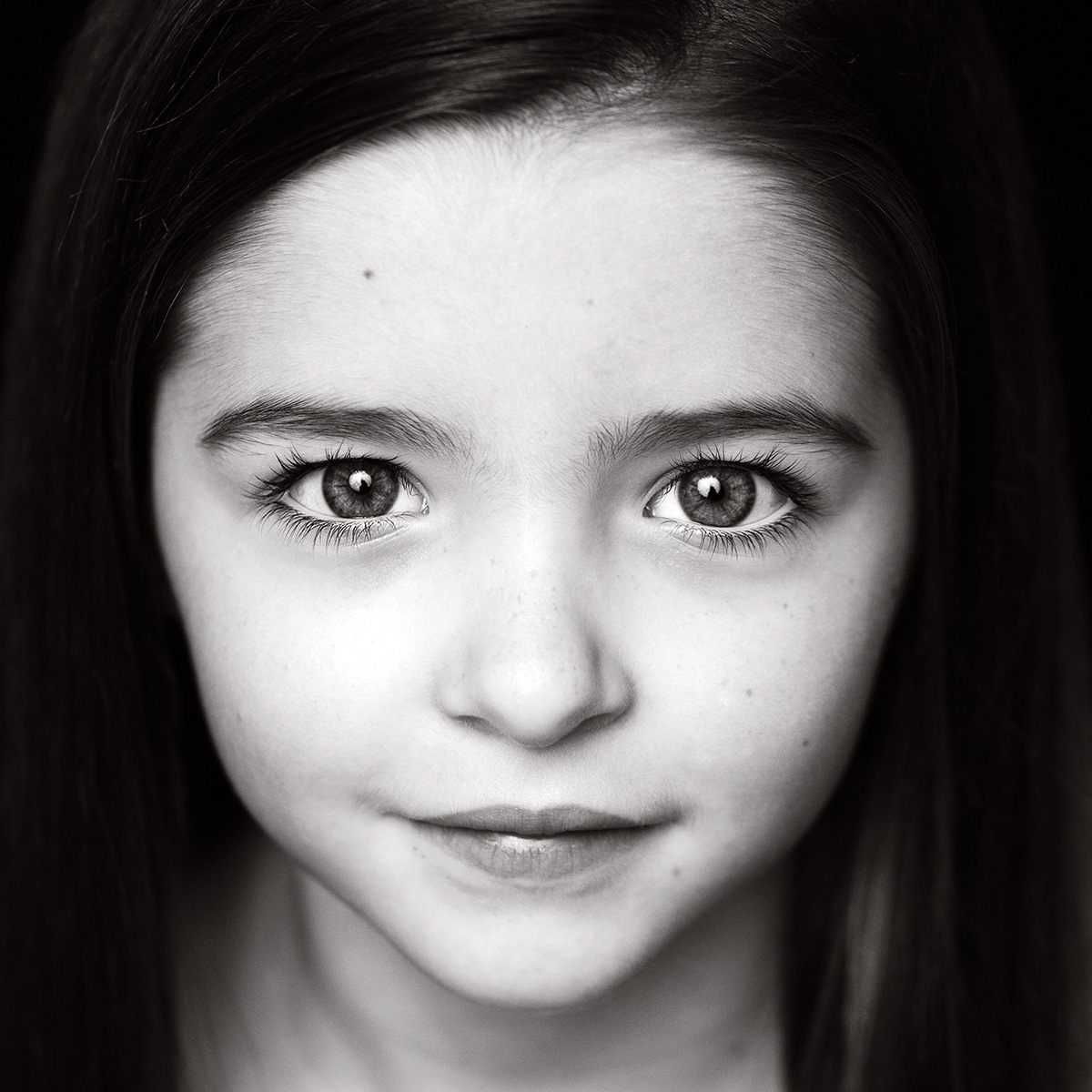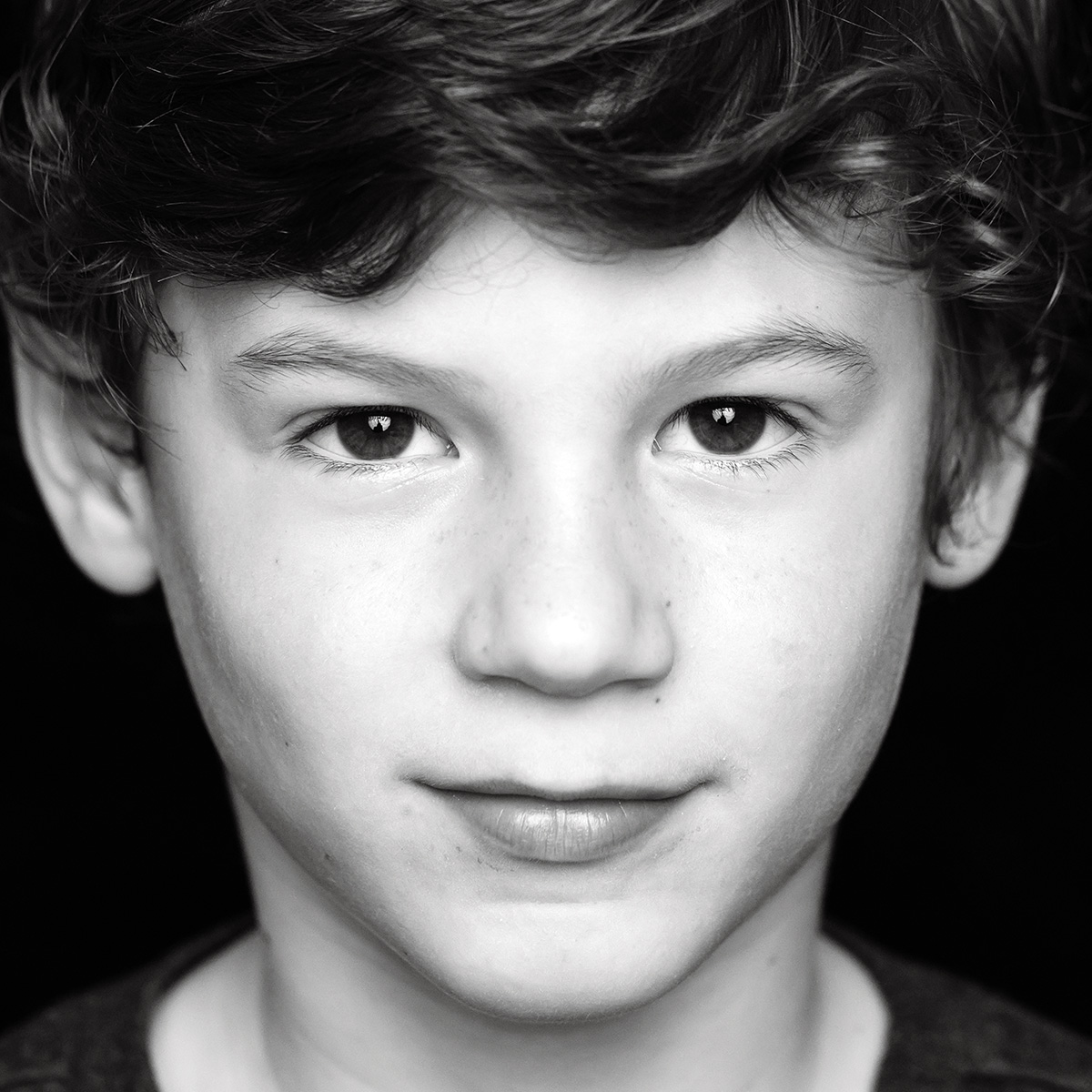Limited Edition, Unlimited Potential
You can profit greatly from a one-day portrait event.
• October 2021 issue

For Olivia Grey Pritchard, CPP, January used to be a quiet month. After a hectic end to the year, Pritchard, whose studio is in New Orleans, would book a few newborn sessions while she recharged and cycled back up for the new year.
Several years ago, she decided to try something new. On the last Saturday of January she hosted an exclusive child portrait day. Dubbed the Black-and-White Closeup Limited Edition Event, the one-day shoot quickly took off, drawing in new and existing clients and ultimately grossing north of $20,000 for a single afternoon of photography.

SIMPLICITY AND SPEED
Pritchard starts with a simple signup process. Her website has a form that allows people to fill in their info, pick a time slot, sign a contract, and verify their appointment. “The idea is to keep everything simple,” says Pritchard. Not only is the signup simple for clients, but the event itself should be streamlined, she says: “It should be very easy to set up and very inexpensive to stage.”
Clients bring their children for 10-minute photo sessions, during which Pritchard produces closeup fine art portraits. Pritchard uses a single light located behind and above her, occasionally adding a reflector for fill. Her set consists of a black blanket to serve as a light-absorbing backdrop.
“I explain to parents that we are going for a beautiful, soulful expression,” says Pritchard. “This is rare and unique. It will look like something that should be hanging in a gallery. This is a showstopper that guests in your home will want to stop and study. That won’t work with a big cheeseburger grin.”
Subjects sit on the floor wearing a black drape. Pritchard photographs neutral expressions from a close distance using a macro lens to produce a unique look. For younger children, Pritchard tells them to sit up tall like a superhero and then shoots down from a slight angle to capture the natural expression created by a child looking up just a little. For kids aged 10 and up, she photographs from a straighter angle to give a direct look and help them appear self-assured.
“To do this kind of work, you have to like kids and be genuine. They’ll know if you’re not. And you have a very short window to make that connection and get the look you need for this type of portrait.”
Olivia Grey Pritchard
She works quickly, building a connection and then photographing from a close distance as soon as she feels that the subject is comfortable. “The trick is connecting with the subject quickly,” says Pritchard. “To do this kind of work, you have to like kids and be genuine. They’ll know if you’re not. And you have a very short window to make that connection and get the look you need for this type of portrait.”
Working close up with subjects looking directly into the camera can make some kids uncomfortable. Pritchard will say a few things to relax her subject, sometimes telling them she’s just going to take a few test shots. When they let their guard down, she might be able to capture what she needs right then. She asks younger subjects to look straight into the lens and see if they can catch the shutter closing. Many of them get excited when they can see it, and it will often elicit genuine smiles that Pritchard captures for add-on print options. If a child is still tense or nervous, Pritchard may ask them to blow raspberries or do some deep breathing to reset.

SELLING EXTRAS
About a week after portrait day, clients come in for a projection ordering session. To keep things simple and minimize the need for decisions, Pritchard displays only a few images. For the $425 nonrefundable booking fee, clients receive the session and one 20x20-inch mounted print.
At the ordering session, clients can upgrade to a 24x24-inch metal print or add framing. They can also add small square prints and tabletop frames that work as gifts for other family members.
“We prepare people for the extra add-ons when they make their booking call so they are coming in knowing what to expect,” says Pritchard. “Most are established clients so they are familiar with our pricing and what they can expect to spend. For new clients, we talk to them in detail from the first call, selling from the very beginning. We ask where the portrait will go in their home, if they prefer modern or traditional. We’re prepping them to make all the decisions ahead of time.”
With add-ons, sales from the event average more than $1,300 per child. If Pritchard books 15 10-minute sessions, she knows she’ll gross $19,500, though a few larger orders typically push her above $20,000.
It usually takes her less than three hours to shoot that number of sessions back-to-back-to-back. Not bad for an afternoon’s work.
A half a dozen years ago, when Pritchard first had the idea to launch the limited-edition portraits, she asked a couple of clients to bring in their kids for test sessions. Using sample images from those sessions, she launched Facebook ads promoting black-and-white fine art prints, and she always referred to the event as an annual occurrence as well as the only chance people had all year to get portraits without a booking fee.
EXCLUSIVITY
Pritchard does the sessions once a year for just three hours to reinforce the exclusivity of the event. On occasion she’s added a couple of extra sessions to accommodate good, long-term clients. Even then, the absolute max she’ll book is 18 sessions.



The sessions have become so popular that returning clients ask to be put on an early notice list. Pritchard sends them a reminder to prebook their appointment a few days before she opens the schedule to the general public. The prebooking helps fill the schedule and makes those clients feel extra special to have received exclusive early access.
Part of the popularity of these sessions is the relative bargain for fine art portraiture. Pritchard’s normal, full-featured portrait sessions average around $3,700 in sales, so these abbreviated sessions represent a significantly smaller investment.
Pritchard is usually booked as much as she wants to be for her traditional family and child portraits. When people come just for these sessions and don’t return for other portrait services, she isn’t bothered. For her it’s a midwinter bonus to boost the bottom line that doesn’t cannibalize any of her other business.
Jeff Kent is the editor-in-chief.



